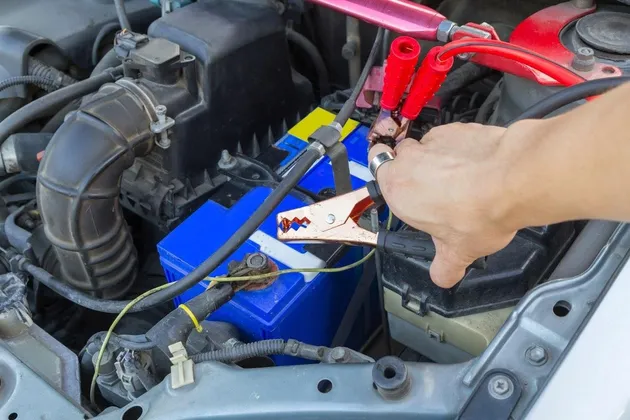Have you ever turned your car’s key, only for nothing at all to happen? The lead-acid batteries in passenger cars typically last for three to five years, but the dreaded click of a drained battery can sometimes indicate more serious trouble. While a quick jump start or charge is usually the first step to getting back on the road, more may be required to prevent your battery from draining again.
If your battery has failed more than once, then your car may suffer from one of these three issues that can masquerade as a dying battery.
1. Alternator Trouble
Your car’s battery is just one component of its more extensive electrical system. The battery provides the stored energy necessary to turn the starter motor over, but your alternator takes the wheel once your car is in motion. While driving, the battery acts only as a filter to help smooth out the power generated by the alternator.
On the typical passenger vehicle, a belt transfers mechanical energy from the engine to the alternator. This energy turns a rotor inside the alternator, ultimately creating an electromagnetic field that generates electrical power. The power from the alternator charges the battery, which, in turn, provides a smooth direct current to the car’s electrical systems.
As your alternator begins to fail, it may no longer be able to charge your battery fully. Completely discharging a lead-acid starter battery can cause damage, so weak charging can ultimately cause premature battery failure.
2. Parasitic Drains
A failing alternator isn’t the only thing that can cause an otherwise good battery to leave you stranded. A variety of electrical systems drain power from your battery while your car runs, but your alternator is more than capable of keeping up with this demand. When your vehicle is off, the story can be much different.
When something continues to sap power from your battery when the engine doesn’t run, the source of the problem is known as a parasitic drain. Although most modern cars draw a marginal amount of power while the engine is off, this is rarely enough to be noticeable. A more significant drain can suck your battery dry. Even a small drain can kill the battery if your car remains off for long enough.
Unfortunately, locating a parasitic drain isn’t always easy. These electrical gremlins can be the result of anything from electrical faults to poorly installed aftermarket equipment. Even something as simple as a faulty trunk switch that fails to turn off your trunk light can drain your battery and ultimately cause it to fail.
3. Bad Cables
Your alternator can’t keep your battery fully charged if the battery cables are faulty. A damaged battery cable or a defective ground strap can, in some cases, present similar symptoms to a failing alternator. Cable issues may also result in various other unusual electrical problems, making this a failure that can sometimes be particularly hard to diagnose.
As with the other issues on this list, the intermittent nature of the problem can make it easy to overlook. A corroded battery cable may work well enough most of the time but fail to sufficiently charge the battery under certain conditions, such as when humidity is high or after a rainstorm. In fact, wiring faults are typically the cause of problems that come and go with the weather.
While a dead battery does not always mean that your car suffers from a more severe issue, you should never ignore the need to jump-start your car repeatedly. The average battery should last at least three years, and most batteries should last five or more. Replacing or jump-starting your battery frequently is almost always a sign of underlying electrical problems.
If you’re sick of replacing batteries that should have several years of life left, Powers Transmission can help you to get to the root of the problem. Contact us today to schedule an evaluation of your car’s electrical system.

